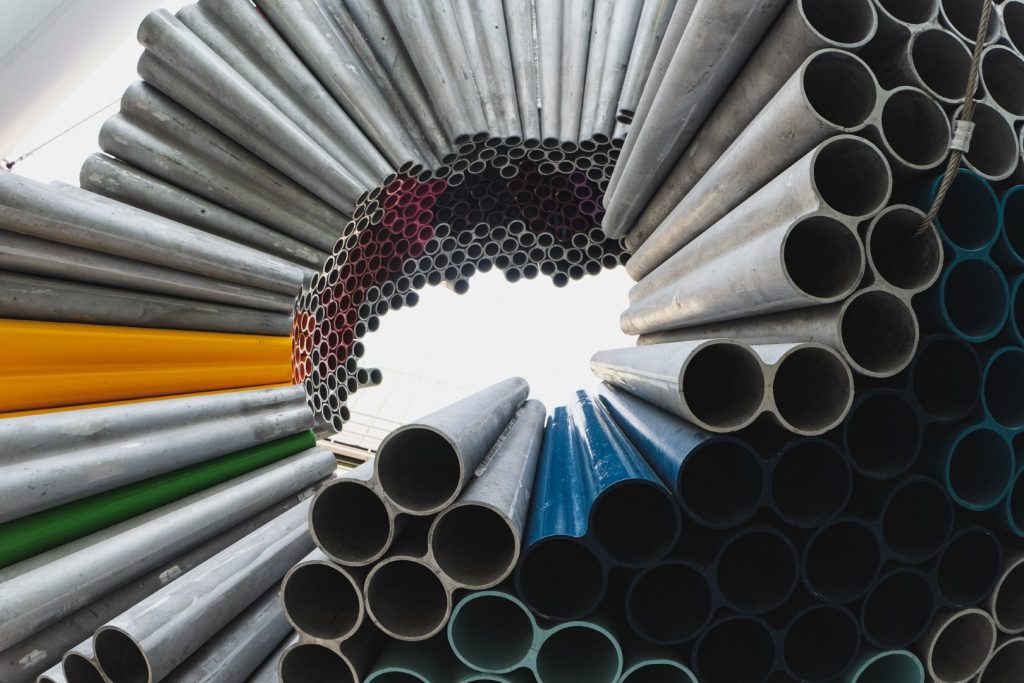Introduction
Pipes are the unsung heroes of modern civilization, silently carrying fluids, gases, and even information from one place to another. Whether it’s water flowing through our homes, oil transporting across continents, or data traveling through the digital realm, pipes play a pivotal role in our daily lives. This blog aims to provide an in-depth look at pipes, their types, materials, applications, and their significance in shaping our world.
The Anatomy of Pipes
A pipe is a cylindrical conduit designed to transport fluids, gases, or information. They are typically characterized by their length, diameter, material, and purpose. Pipes come in a multitude of sizes and shapes, each tailored to its specific application.
Types of Pipes
- Metal Pipes: These include steel, copper, and stainless steel pipes. They are used in various applications, such as water supply, gas transportation, and industrial processes due to their strength and durability.
- Plastic Pipes: Materials like PVC (polyvinyl chloride), CPVC (chlorinated polyvinyl chloride), and PEX (cross-linked polyethylene) are commonly used for water supply, drainage, and irrigation systems due to their corrosion resistance and ease of installation.
- Concrete Pipes: Used primarily for drainage and sewage systems, concrete pipes are known for their durability and ability to handle heavy loads.
- Composite Pipes: These pipes combine materials like fiberglass, resin, and plastic to create pipes with specific properties, such as corrosion resistance, flexibility, and strength.
- Ceramic Pipes: Suitable for specialized applications, ceramic pipes are used for transporting abrasive materials, chemicals, and in high-temperature environments.
Applications of Pipes
- Water Supply and Distribution: Pipes provide a reliable means of delivering clean water to homes, businesses, and communities, ensuring a basic necessity for life.
- Sanitation and Sewage: Proper sewage and drainage systems rely on pipes to carry waste and wastewater away from inhabited areas to treatment facilities.
- Oil and Gas Transport: Pipelines are critical for transporting oil, natural gas, and other petroleum products across vast distances, connecting production sites to refineries and consumers.
- Industrial Processes: Pipes facilitate the movement of chemicals, fluids, and gases within manufacturing plants, contributing to various processes in industries like chemicals, pharmaceuticals, and food production.
- Heating and Cooling Systems: Pipes circulate hot water, steam, or chilled liquids to regulate temperature in buildings, providing comfort and efficiency.
- Telecommunications: Fiber optic cables act as pipes for transmitting digital data, enabling high-speed internet and communication services.
Materials and Durability
The choice of pipe material depends on factors like the transported substance, pressure, temperature, and the environment. Proper material selection ensures longevity, efficiency, and safety of the system.
Challenges and Innovations
Pipes face challenges such as corrosion, leaks, and the environmental impact of their manufacturing and installation. Innovations include corrosion-resistant coatings, smart pipe monitoring systems, and sustainable pipe materials.
Conclusion
Pipes are the arteries of modern society, enabling the seamless flow of resources, energy, and information. From the ancient aqueducts to the intricate web of modern pipelines, pipes have played a fundamental role in shaping human progress. Understanding the diverse types of pipes, their applications, and the innovations driving their evolution highlights the vital role they play in our interconnected world. So, the next time you turn on the tap, send a message, or fuel up your vehicle, take a moment to appreciate the incredible journey that each pipe enables.

